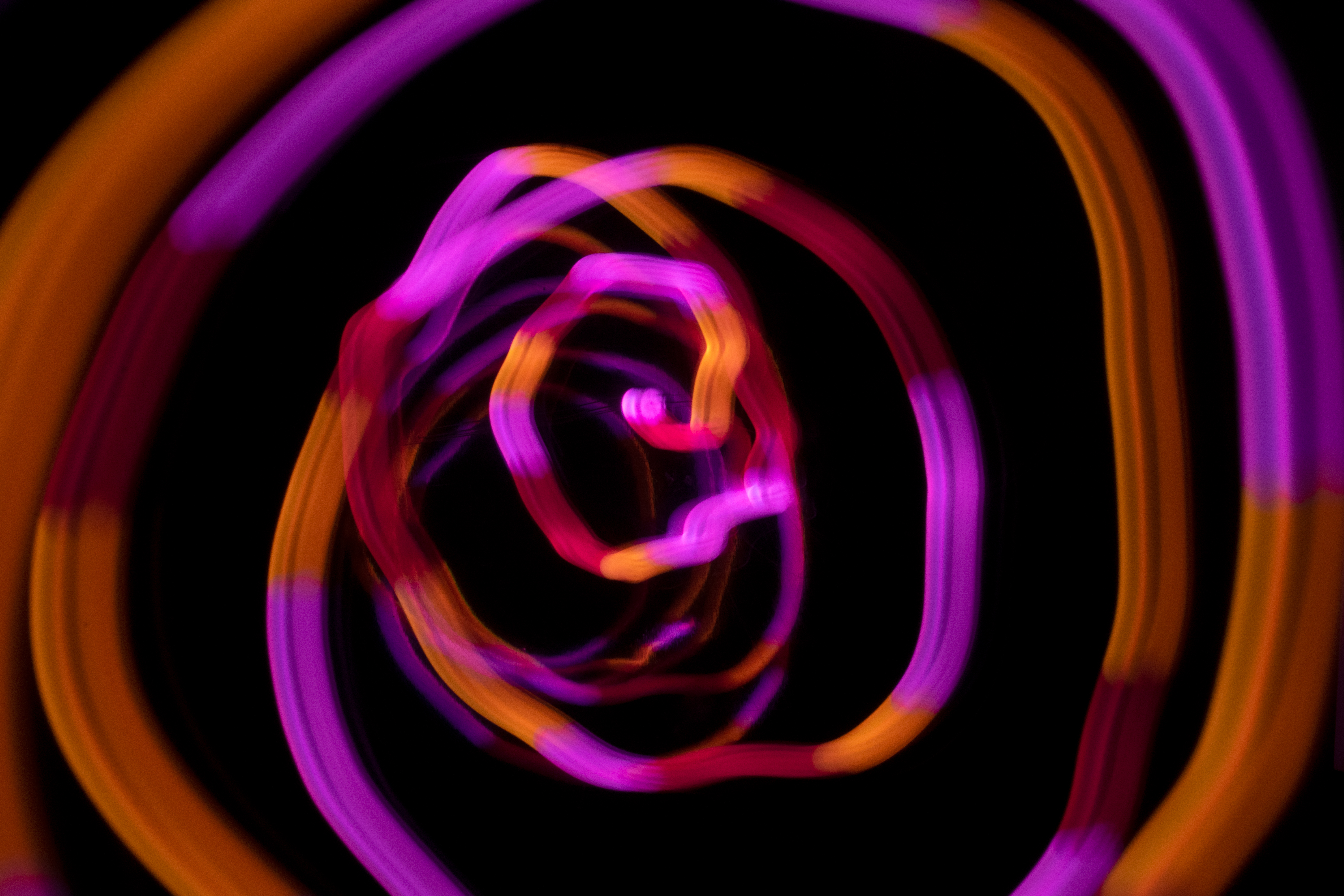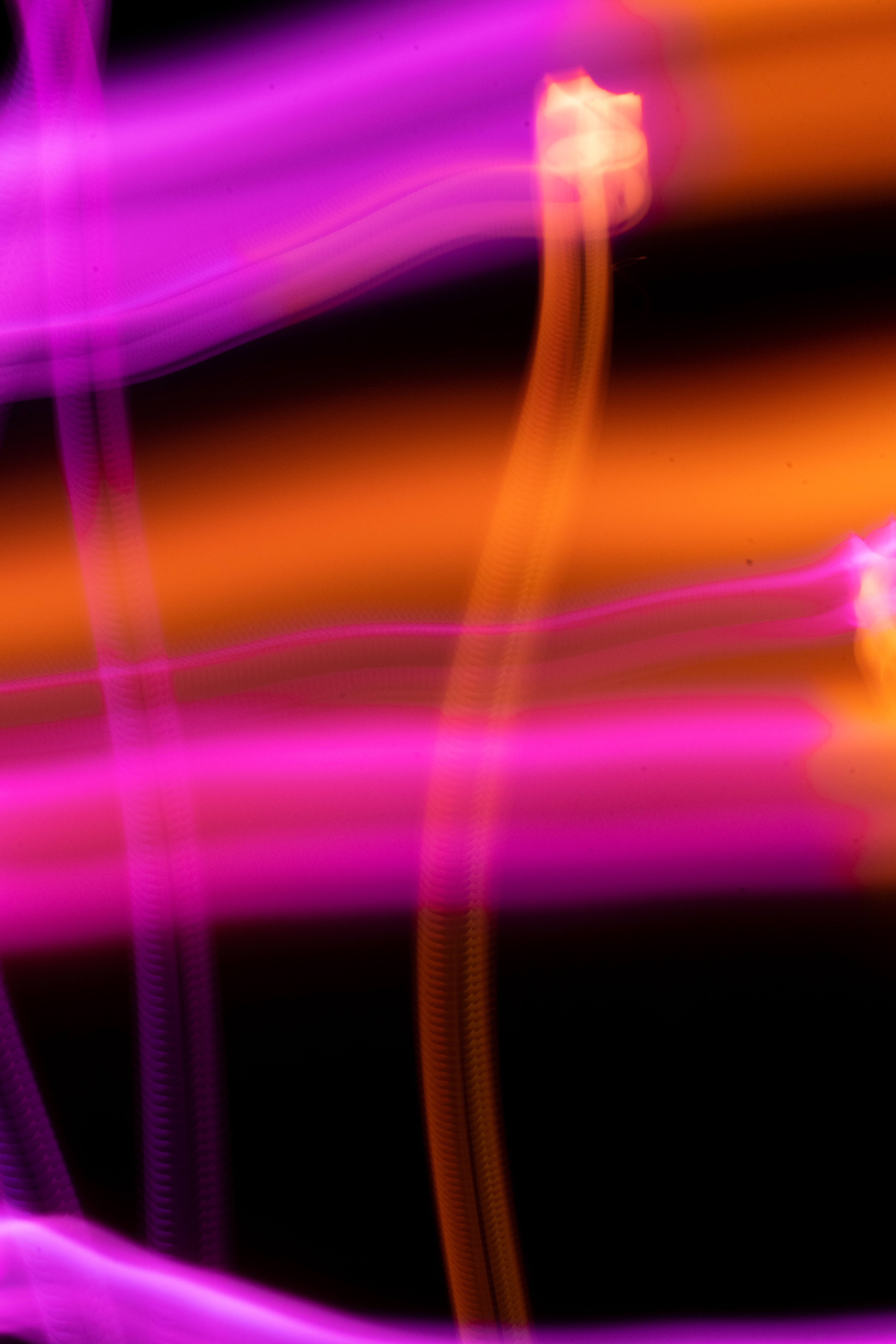pixel

A digital screen displays images through thousands of tiny coloured pixels, which is short for picture element. From screen to screen, the geometry of the picture elements can vary, but they all consist of RGB colour phosphors that respond to electrical signals and emit light. Combinations of illuminated phosphors produce colours, and from a distance, many pixels form a visual. Screen as pixel uses the smallest part of the digital image to create drawings with light.
Painting with Light
Drawing Tests
RGB is an additive colour space which means combining red, green and blue will produce white. When the LED is moved within a small area, the brightness concentrates in a smaller area. When the lines are more spread out, the light is more distributed, and you can see more variations in colour. Moving the LED swiftly through the air creates a more textural stroke. It is reminiscent of a snake or x-ray. Attempting to draw a straight line is difficult. With slower movements, the camera captures the changes in colour. In this instance, the colours change at regular intervals. Testing Backgrounds
At this point, I was only photographing on a glossy black acrylic surface. I wanted to see the changes in light from shooting with matte backgrounds. Black absorbs light while white reflects light, and you can see the difference. The light reflected in the glassy surfaces duplicated lines. With the black felt, some of the fibres got illuminated but could easily be removed in post-production. I think glossy black acrylic gives the most vibrant colours despite creating reflections.Programming Designs
Sometimes the connection between wires would separate and thus unexpectedly change the colour of the LED. This accident inspired me to program the LED to select from a tonal palette for random durations. I recorded the changes with long exposure.
Through code, I could program the LED to turn off and on at random intervals. Just like how a pixel works in a screen when the light is off, that section is black. This pause enabled me to draw separate shapes rather than a continuous line.
The Colour Grey
If screens display colour with light, how does it display tones of grey?
Is a dimmer light, grey?
Is grey a dimmer white?
Is white a brighter light?
Is grey a darker white?
Is grey a dimmer white?
Is white a brighter light?
Is grey a darker white?
Using Arduino, the LED can be programmed to display different colours. To create white light, you need all colour values to be at relative intensities; 100% creates white, and 0% creates black. Would an amount of 50% produce a grey colour? No. The light would be merely a less intense light. So how do screens display grey tones?
This website explains how grey colours appear on screens. Each pixel is surrounded in a black mask. With an intense light, more light filters through creating a whiter highlight as opposed to a weaker light which will produce a grey shade.
Results
I am pleased with the visual outcomes created with just one LED. The photos look like VR Tilt Brush drawings; a success because I always wonder about how we can create a VR-like experience without a bulky headset.
Despite being quite an abstracted inspiration from the screen, the final images show no relevance to the physical screen but are reminiscent of screen aesthetics with the neon colours. The LED represents a single tiny pixel, yet it presents itself as a large, colourful organic form here.


Try at home
This image shows my top-down setup; the camera was mounted above the drawing area. For the instructions and code to run the program in Arduino, use this tutorial.

Exhibition
For the exhibition, large scale paintings offer a more physical experience. On a separate screen, the participants set the colour changes for the 3-second painting interval, which programs a pointer with an LED light. A camera sits in front of the participants to capture their movement. The risk of this setup is that the participants' clothes or bodies will appear in the image. Their final piece is presented on a large screen, along with others. To mirror the role of pixels, each of the individual paintings can come together to form an image.